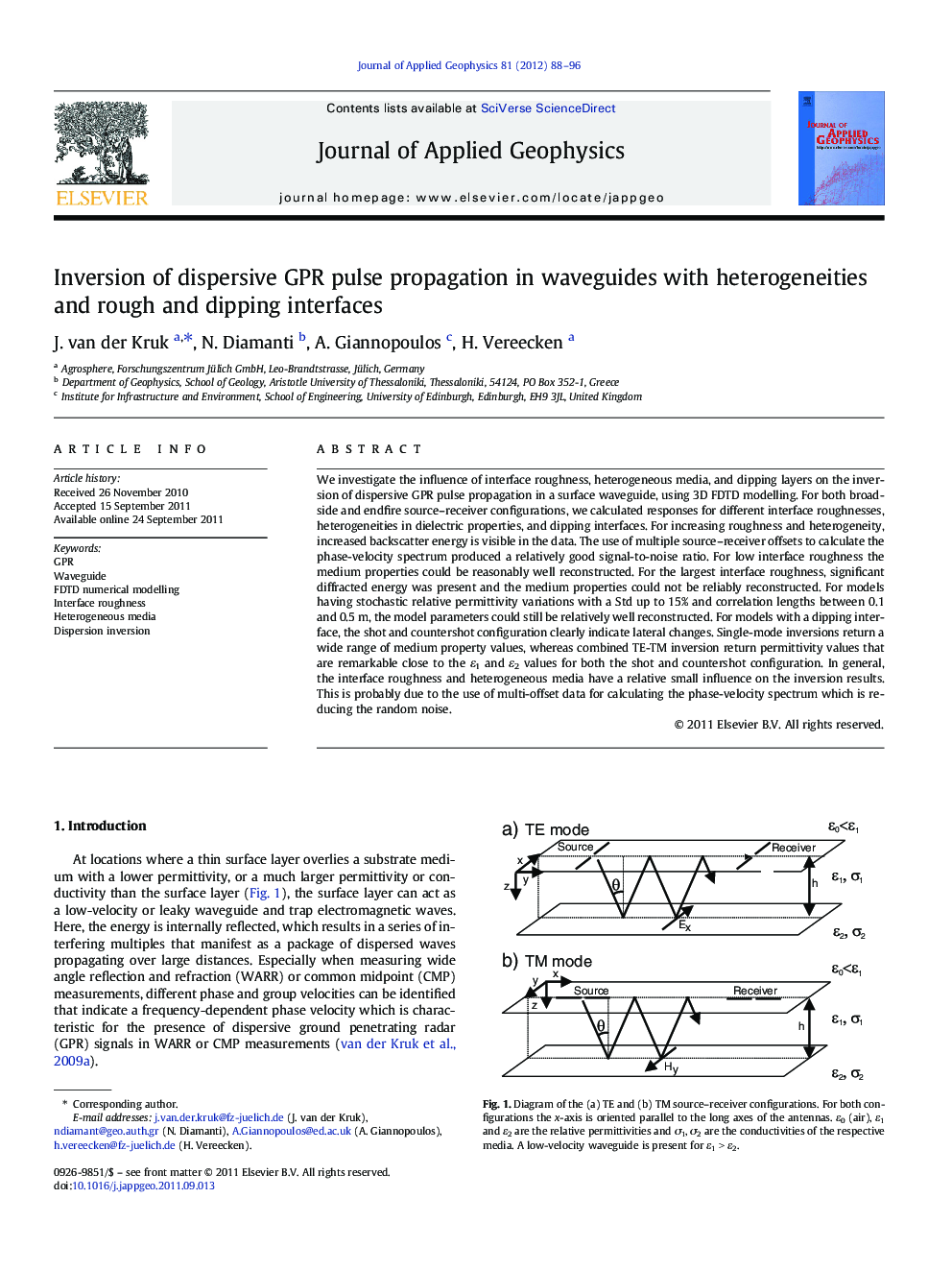| کد مقاله | کد نشریه | سال انتشار | مقاله انگلیسی | نسخه تمام متن |
|---|---|---|---|---|
| 4740432 | 1641170 | 2012 | 9 صفحه PDF | دانلود رایگان |

We investigate the influence of interface roughness, heterogeneous media, and dipping layers on the inversion of dispersive GPR pulse propagation in a surface waveguide, using 3D FDTD modelling. For both broadside and endfire source–receiver configurations, we calculated responses for different interface roughnesses, heterogeneities in dielectric properties, and dipping interfaces. For increasing roughness and heterogeneity, increased backscatter energy is visible in the data. The use of multiple source–receiver offsets to calculate the phase-velocity spectrum produced a relatively good signal-to-noise ratio. For low interface roughness the medium properties could be reasonably well reconstructed. For the largest interface roughness, significant diffracted energy was present and the medium properties could not be reliably reconstructed. For models having stochastic relative permittivity variations with a Std up to 15% and correlation lengths between 0.1 and 0.5 m, the model parameters could still be relatively well reconstructed. For models with a dipping interface, the shot and countershot configuration clearly indicate lateral changes. Single-mode inversions return a wide range of medium property values, whereas combined TE-TM inversion return permittivity values that are remarkable close to the ε1 and ε2 values for both the shot and countershot configuration. In general, the interface roughness and heterogeneous media have a relative small influence on the inversion results. This is probably due to the use of multi-offset data for calculating the phase-velocity spectrum which is reducing the random noise.
► Roughness and heterogeneity results in backscatter energy for waveguide induced dispersive data.
► Only large interface roughness influences the dispersion inversion results.
► Shot and countershot configurations for dipping waveguides clearly indicate lateral changes.
► Combined TE-TM inversion return permittivity results close to actual values.
► Using multi-offset data to calculate phase-velocity spectrum reduces the random noise.
Journal: Journal of Applied Geophysics - Volume 81, June 2012, Pages 88–96